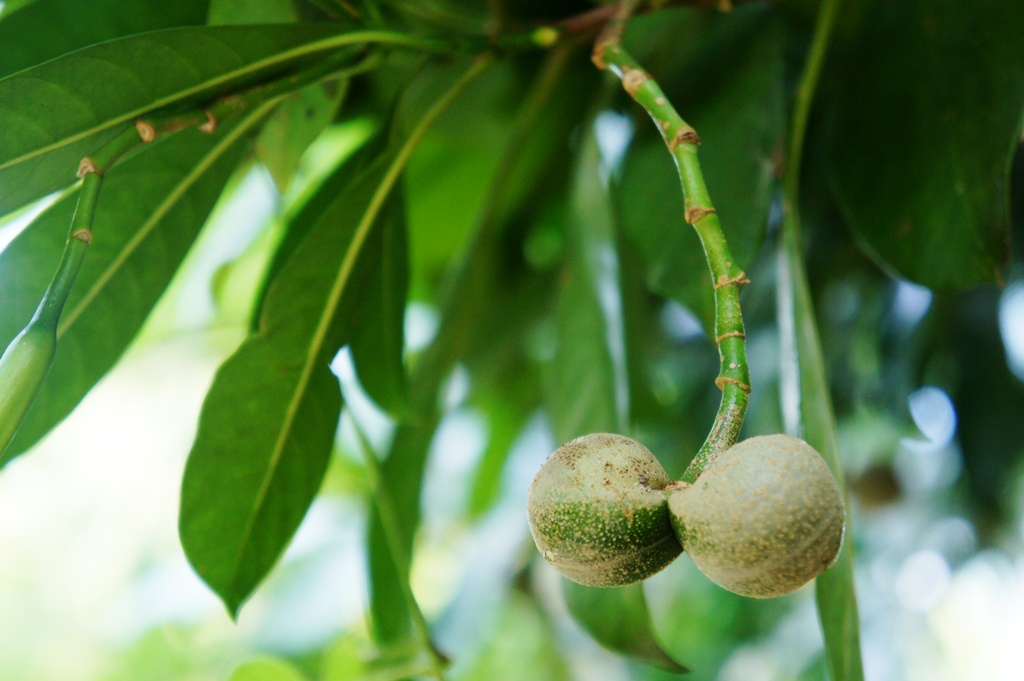Welcome to our blog about the Bayag-usa tree, also known as the testicle tree! This unique and intriguing plant is native to tropical regions of Asia and Africa and has been used for centuries for its medicinal properties. With its unusual name and fascinating characteristics, it’s no wonder that the Bayag-usa tree has captured the attention of many people worldwide. In this article, we’ll explore everything you need to know about this remarkable plant – from its description and uses to its conservation status. So sit back, relax, and let’s dive into the world of one of nature’s most curious creations – the Bayag-usa tree!
Bayag-usa Tree Description and Characteristics
Bayag-usa, scientific name: Tabernaemontana globosa Blanco, is a tree reaching a height of up to 3 meters. Leaves are simple, opposite, oblong-elliptic; dark green on the upper surface and pale beneath. The flowers are creamy-white and showy. Fruit comes in pairs, brownish, 3 to 5 centimeters in diameter. Seeds are embedded in the pulp.

The leaves of the Bayag-usa tree are large, leathery, and dark green. They have a smooth texture and are arranged alternately on the branches. The flowers of this plant are bell-shaped and reddish-purple with long stamens. They bloom during the summer months, attracting various pollinators such as bats.
One interesting fact about this tree is that it has a relatively short lifespan compared to other trees – usually up to 50 years only! But despite its limited time on earth, it remains an essential part of many traditional medicines across Southeast Asia.
Due to its anti-inflammatory properties, bayag-usa’s fruit has been used for centuries by indigenous people for various medicinal purposes, from skin infections to snake bites. The bark contains compounds like flavonoids, aiding wound healing while reducing inflammation when applied directly to affected areas.
There’s no denying that the Bayag-usa tree is truly one-of-a-kind in terms of appearance and characteristics.
Lists of Medicinal Uses and Applications
The bayag-usa tree, or the testicle tree, is not just an ornamental plant. Its leaves and fruits have been used in traditional medicine for centuries. Here are some of its claimed medicinal uses:
1. Treats fever – The decoction of the bark and leaves reduces fever.
2. Relieves coughs – The crushed leaves mixed with honey can soothe a sore throat and relieve coughing.
3. Heals wounds – Bayag-usa sap or resin has antiseptic properties that help heal cuts, burns, and other skin injuries.
4. Lowers blood pressure – Drinking tea made from bayag-usa fruit may help lower high blood pressure.
5. Reduces inflammation – Applying a poultice made from crushed leaves on affected areas can alleviate swelling caused by inflammation.
6. Boosts immunity – Boiling the bark of this tree produces a powerful tonic that helps to boost one’s immune system against infections
Aside from its medicinal benefits, the wood of bayag-usa trees is commonly used as firewood and charcoal-making.
When using natural remedies, it is essential to consult with a healthcare professional before consuming any part of the plant for medical use.
Bayag-usa Tree Conservation Status and Challenges
The bayag-usa tree is facing several conservation challenges. Habitat loss and fragmentation are among the primary factors leading to its population decline. Forest fires, logging, and land clearing for agriculture have also significantly impacted the species.
Moreover, overharvesting bayag-usa trees for medicinal purposes has become a concern. The high demand for its bark and leaves used in traditional medicine can lead to unsustainable harvest levels if not regulated properly.
Climate change poses a significant threat to this species as it affects its growth patterns and ability to survive under changing environmental conditions.
Conservation efforts are underway to protect the remaining populations of bayag-usa trees through reforestation programs, the establishment of protected areas, and community-based forest management initiatives. However, more needs to be done at all levels—local communities, government agencies, and NGOs—to ensure this valuable species’ survival.
We must take action now before it’s too late; otherwise, future generations may never get to experience this remarkable plant’s benefits!
Final Words
The Bayag-usa tree, also known as the testicle tree, is a remarkable plant with many benefits for humans and animals. Its leaves and fruits have been used for centuries to treat various ailments, and it has been an important food source for local communities.
However, despite its numerous uses, the Bayag-usa tree faces challenges like habitat loss due to deforestation, overharvesting of its leaves and fruits, and climate change. Therefore, conservation efforts are necessary to ensure this valuable species does not become extinct.
As we continue to appreciate the importance of plants in our lives, let us also remember our responsibility toward their preservation. By protecting them from extinction, we are safeguarding not only their future but ours as well.
In conclusion (just kidding!), let us all do our part in preserving nature by supporting sustainable practices that will help protect endangered species like the Bayag-usa tree. Let’s work together towards a brighter future where human progress coexists harmoniously with nature!
See Also:
- Lapnisan: Agarwood Description, Characteristics, and Uses
- Tindalo Tree Characteristics and Uses
- Ipil Tree Characteristics and Uses
- Mangkono Tree Characteristics and Uses
- Kamagong Wood Characteristics and Uses
